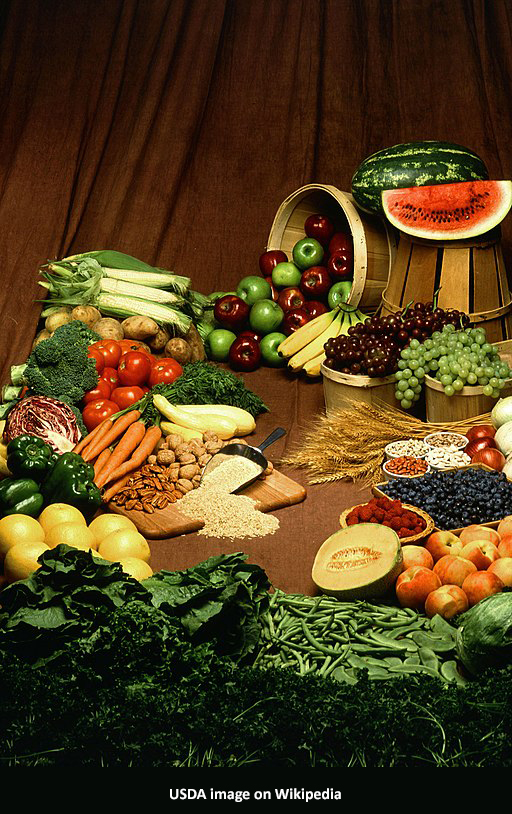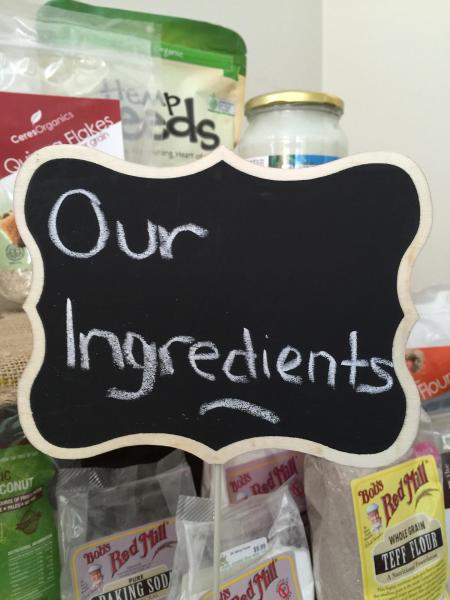Food certification labels do not indicate or guarantee better human nutrition, health, or product safety; they are marketing devices using a set of standards based on social, moral or environmental issues. You can read more about faith-based labels such as kosher and halal and the major food safety, organic, and non-GMO certification labels here.
Gluten and Free-From Labels
Many consumers want to eat healthier and avoid certain foods or ingredients. The food industry supplies this information as ‘free-from’ labeling. The most popular by far is gluten-free.
Certain individuals are genetically predisposed to an autoimmune inflammation of the gut, celiac disease. [1] Gluten found in wheat, barley, rye, and their hybrids is actually two proteins, glutenin and gliadin, providing functional properties such as texture and elasticity to bread and baked goods. The FDA considers wheat, not gluten, an allergen. To assist celiac sufferers, the Food and Drug Administration (FDA) established a standard in 2014. Gluten-free is defined as less than 20 parts per million (ppm), the lowest level that can be accurately detected in foods. The gluten-free label regulations give consumers a tool for avoiding or managing their dietary intake of gluten.
While manufacturers of bread, baked goods, and pasta must use alternative grains or ingredients to produce gluten-free products, many foods are inherently gluten-free (fruits, vegetables, and eggs). But whether devoid of gluten by nature or manufacture, food can have a gluten-free label if it meets FDA requirements. This claim is not required and may not appear as a label even if the food is gluten-free. One can double-check by searching the FDA-mandated ingredients label on the back of the package to see if gluten-containing grains are used.
Most manufacturers will cite gluten-free loud and proud, separate from ingredient labels. There are gluten-free certification programs available for food manufacturers and producers, but the FDA does not endorse these third-party accreditations. FDA oversight for gluten-free is reliant on customer complaints of ‘adverse events’ and reports of label misuse.
In the US, other free-from claims are voluntary; however a food producer may wish to include these claims to help consumers avoid an ingredient due to allergies or intolerance, religious or dietary practices such as veganism, or other non-nutritional reasons. According to the Code of Federal Regulations, these ‘free from’ claims must be truthful and not misleading to the shopper.
“[When you] label something as free from some substance, you create a presumption that the product without is superior to the product with.” [2]
There is a not-so-subtle bias that free-from labels plant in the minds of the consumer. ‘Free from’ labels are lightly regulated by the US government and many producers and manufacturers self-certify. Why pay a certifier when you can proclaim it for yourself on the front of the package? Common self-certifications which limit ingredients include vegan, paleo, meat-free or meat-less, dairy-free, lactose-free – anything other than gluten-free. These labels serve as quick references for shoppers who want to avoid these ingredients for medical or other reasons.
Environmental, Animal Welfare, and Fair Trade Labels
Since the 1960s, the environmental movement has championed better practices, not just in agriculture, but in all walks of life. Food manufacturers have felt this pressure and have responded by updating their operating procedures and labeling foods to indicate their environmental stewardship. For example, Salmon Safe, certifies that its products are made with methods to protect native salmon, minimizing pollution in rivers and wetlands, limiting the use of pesticides, employing better irrigation practices, and planting trees by rivers. Other certified environmental labels include Sustainably Grown Certified, Demeter Certified Biodynamic, and Rainforest Alliance Certified/UTZ. (Here is an expansive listing of these certifications)
Many environmental certifications overlap with social and economic ones, like animal welfare labels; possibly the largest category of non-nutritive food labels, both certified and non-certified. I found at least 17 food labels promoting animal welfare. Some are certified by consumer advocacy or trade associations like Certified Humane Raised and Handled, American Grassfed Approved, and Global Animal Partnership. Some have governmental oversight like Raised Without Antibiotics, where the USDA grants these labels.
Antibiotic Free label has a similar name to Raised Without Antibiotics but is not certified by the USDA; and is just one example of clip art labels which are readily available and used by unscrupulous sellers. Other popular animal welfare labels that have no outside verification include free-range, hormone-free, local farm fresh, and superfood. Cage-free labels for poultry do not require third-party certification and are self-certified. Let the buyer beware - Animal welfare labels are a minefield of greenwashing and false hopes of alternative husbandry practices.
Fair Trade labels promote social justice in the form of decent working conditions, fair wages and prices for their products. Notable, fair trade labels, inspected and certified by third-parties include:
Premiums for these products are funneled back into the community to help sustain and develop new markets.
Do We Define Natural and Clean?
 Since 2016, the FDA has been trying to decide what is meant by the term ‘natural’. It has been taking comments on the use of the term in food labeling since that time. While there is no formal governmental definition that can protect food manufacturers from opportunistic attorneys and litigation, the FDA’s longstanding policy for natural in shortened form is this: nothing artificial or synthetic.
Since 2016, the FDA has been trying to decide what is meant by the term ‘natural’. It has been taking comments on the use of the term in food labeling since that time. While there is no formal governmental definition that can protect food manufacturers from opportunistic attorneys and litigation, the FDA’s longstanding policy for natural in shortened form is this: nothing artificial or synthetic.
Like “natural,” the term “clean” is consumer driven with no official definition, regulations, or guidelines from the Food and Drug Administration (FDA) or the U.S. Department of Agriculture. We are left to our own devices and opinions as to what constitutes clean food. Foods with natural or clean labels have been the subject of many lawsuits since their meaning is unclear. When asked, most consumers would respond that clean means a short ingredient list with no artificial colors or preservatives. Chemical names, however innocuous, are a no-no. Clean also means minimal processing to most shoppers. The food industry has responded by finding alternative ingredients with common names. Vinegar now is listed instead of acetic acid. If a functional ingredient is listed, explanations for their use helps consumers understand their inclusion: “guar gum for texture”.
Learn More About Food Labels
Some food labels accurately describe their purpose with claim verifications by disinterested third parties. But deceptive marketing practices and self-certifications abound. Every day, new labels with righteous names proliferate on your grocer’s shelves. Are these labels solid proof or merely greenwashing? It’s hard to tell at a glance; non-certified labels with no third-party oversight are only ink. If you see a label, be curious, go to the website to determine if they are certified and by whom, and what standards are they uphold.
[1] Wheat as a causative agent for celiac disease was not discovered until the Dutch Famine of 1944. During the final years of World War II, children did not have access to bread. Dr. Willem Dicke, a pediatrician, noted that his young celiac patient’s conditions improved with the rationing of wheat flour but relapsed when bread was added back to their diets.
[2] Labeling Food Processes: The Good, the Bad and the Ugly Applied Economic Policy and Perspective DOI: 10.1093/aepp/ppx028
Sources:
The Changing Face of Clean Label Institute of Food Technologists
Food Labels Explained Farm Aid
When, and Why, Did Everyone Stop Eating Gluten? Scientific American
Retaining Ingredient Functionality in Clean Label Product Institute of Food Technologists




